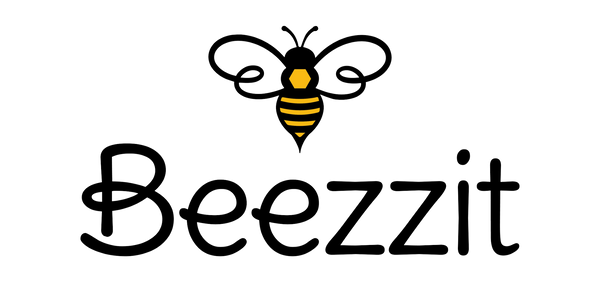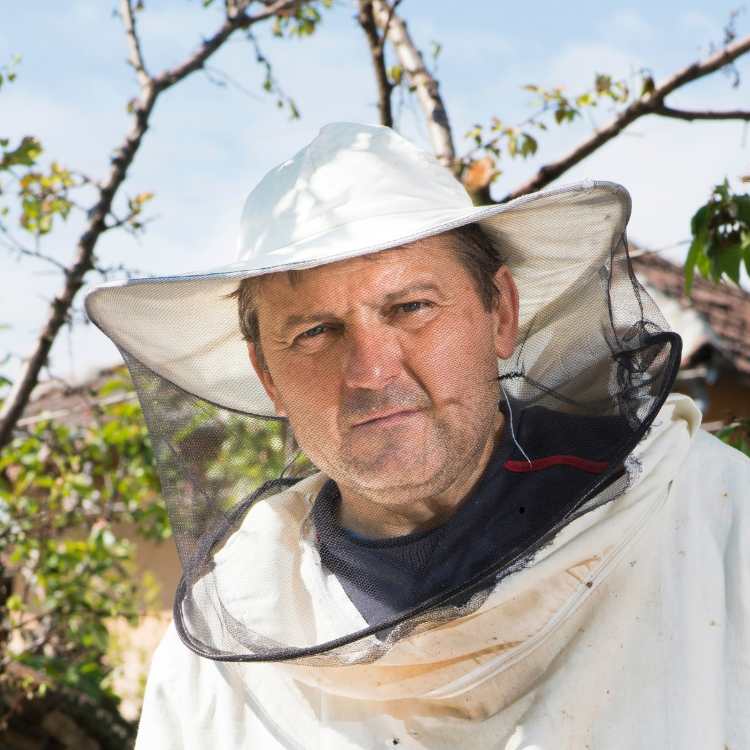Open a beehive and you will soon smell something earthy, tangy and slightly sweet. This is not honey, but something deeper. Tucked neatly between the honey and brood comb lies a substance most people have never heard of. It is sticky, fermented and incredibly powerful. Bee bread. So, what is bee bread exactly?
I must have gotten this question a million times at the farmers market and here is the short answer: it’s food. Not for us, but for the bees. And here’s the long answer, the one that will surely change your perspective about the world of bees.
First things first: What is bee bread?
What is bee bread? It is the bees’ version of sourdough, created not by skilled human hands but by tiny winged chemists. Bee bread is made when honeybees collect pollen from flowers and bring it back to the hive. But they don’t consume all the raw pollen straight. The foragers mix the pollen with nectar or honey and their saliva containing essential enzymes. Then this blend is packed into the honeycomb cells, layered with a thin seal of honey. Over time, a lactic acid fermentation kicks in, transforming pollen into a dense, probiotic rich, highly nutritious paste we call bee bread.
So, in essence, what is bee bread? It is the fermented pollen product bees depend on for protein and essential nutrients.

The difference between bee bread and bee pollen
I know what you are thinking. Isn’t bee bread just another name for bee pollen? Not quite.
Think of fresh bee pollen like flour and bee bread as the baked, aged, sourdough version. Pollen alone is rich in nutrients, but it is hard to digest for the bees. The process of fermentation breaks down the tough outer shells, boosts bioavailability and adds new compounds that only exist because of the microbial action.
So again, what is bee bread? It is an upgraded, fermented superfood for the bees that supports life inside the hive.
Why bees need bee bread?
You might assume that bees live off honey. And it is true, but only when it comes to energy. But for growth, repair and immune defense, bee bread is needed. Bee larvae cannot develop on honey alone. They need amino acids, fats, vitamins and minerals. Nurse bees feed the young with royal jelly in the first few days, but after that, bee bread becomes the primary source of their food. Adult worker bees also consume it to stay strong, especially during demanding jobs like wax building or colony defense.
When pollen is scarce in nature, bees dip into their bee bread reserves to keep the hive running.

What’s in bee bread
Let’s dive into the makeup of this hive goldmine. When scientists started to ask what is bee bread, they found a cocktail of
- Proteins and free amino acids
- Natural sugars
- Organic acids
- B vitamins
- Essential fatty acids
- Polyphenols and antioxidants
- Enzymes
- Minerals like potassium, magnesium, calcium, and iron
The nutritional profile of the bee bread varies with location, season, and the local plants in bloom. A colony near a lavender field will make different bee bread than one in a sunflower patch. And that’s the beauty of the process.
Can humans eat bee bread?
Now that we know what is bee bread, the next natural question is, can humans eat it? Yes, and many already do.
You can easily buy bee bread from health food stores and is a great way of boosting immunity, gut health and energy. Thanks to its fermented state, it is much easier to digest than raw pollen and richer in beneficial compounds. People use it in smoothies, chew it raw or even add it to yogurt and oatmeal.
Several studies suggest bee bread has antioxidant, anti-inflammatory, and even antimicrobial effects. Some compounds found in bee bread may help lower blood sugar, support liver health and improve metabolism. But let’s be clear. This is not a miracle cure. It is more of a supplement and not a substitute for good nutrition and medical care.

Edible bee bread
Why bee bread matters for beekeepers too
Understanding what is bee bread is also important from the perspective of a beekeeper too. Over the history of beekeeping, beekeepers have realized that bee bread can be a key indicator of a well fed queen, healthy brood, and better winter survival rates. In recent years, more and more beekeepers have also learned how to collect bee bread without damaging the hive. The process is tricky but not impossible. Some produce enough to share a little with humans while keeping plenty for the bees.
That said, never overharvest. Bees come first. If a colony’s bee bread reserves are low, leave it untouched—no questions.
The bottom line
Living in a world where food is fast, processed and disconnected from nature, we tend to forget the wonders of the natural world. Bee bread is the polar opposite of the type of food we consume. It’s ancient, wild and yet, nutritional. So, the next time someone asks you, what is bee bread, you will know exactly what to say. It is the hive’s protein bank, made from flower pollen, bee enzymes and time. It feeds the bees and can nourish us too.
For more such fascinating stories from the wonderful world of bees, consider following my full blog here.





